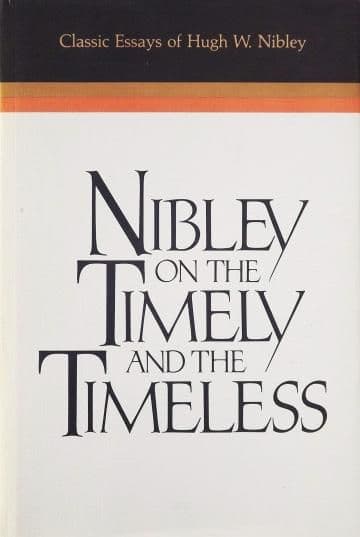Book
13 Chapters

Abstract
Moses takes us back to the beginning, but which beginning? Nothing in the restored gospel is more stimulating to the inquiring mind than the infinitely expanded panorama of time and space it spreads before us. Our existence is viewed not as a one-act play, beginning with instantaneous creation of everything out of nothing and ending with its dissolution into the immaterial nothing from which it came (as St. Jerome puts it), but as a series of episodes of which for the present we are allowed to view only a few. The play has always been going on and always will be: the man Adam played other roles and was known by different names before he came here, and after his departure from mortal life he assumes other offices and titles. Even in this life everyone changes from one form to another, gets new names and callings and new identities as he plays his proverbial seven parts, but always preserving his identity as the same conscious living being. The common religion of the human race centers around that theme: the individual and the society pass from one stage of life to another not by a gradual and imperceptible evolution but by a series of abrupt transformations, dramatized the world over in rites of passage, of which birth and death are the prime examples, coming not unannounced but suddenly and irresistibly when their time is ripe; other passages, as into puberty and marriage, follow the same pattern.
In such a perspective of eternity the stock questions of controversy between science and religion become meaningless. When did it all begin — can you set a date? Were there ever humanlike creatures who did not belong to the human race? (There still are!) How old is the earth? the universe? How long are they going to last? What will we do in heaven forever? And so on. Nothing is settled yet, not only because the last precincts are never heard from in science—and their report always comes as a shocker—but because we are far from getting the last word in religion either; for us the story remains open-ended, at both ends, in a progression of beginnings and endings without beginning or end, each episode proceeding from what goes before and leading to the next. The Absolutes of the University of Alexandria, to which the doctors of the Christians and the Jews were completely in the thrall from the fourth century on, simply do not exist for Latter-day Saints. Instead of that, they have a much bigger book to study; it is time they were getting with it.
Book
13 Chapters
Items in the BMC Archive are made publicly available for non-commercial, private use. Inclusion within the BMC Archive does not imply endorsement. Items do not represent the official views of The Church of Jesus Christ of Latter-day Saints or of Book of Mormon Central.